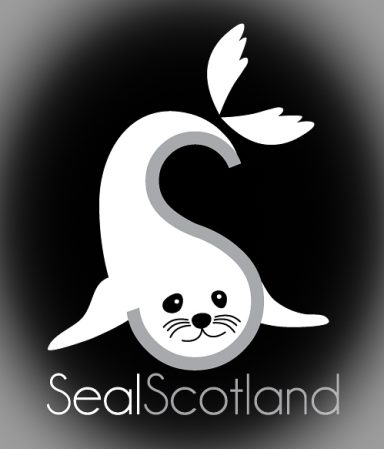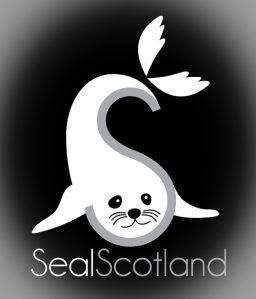Seal
Scotland
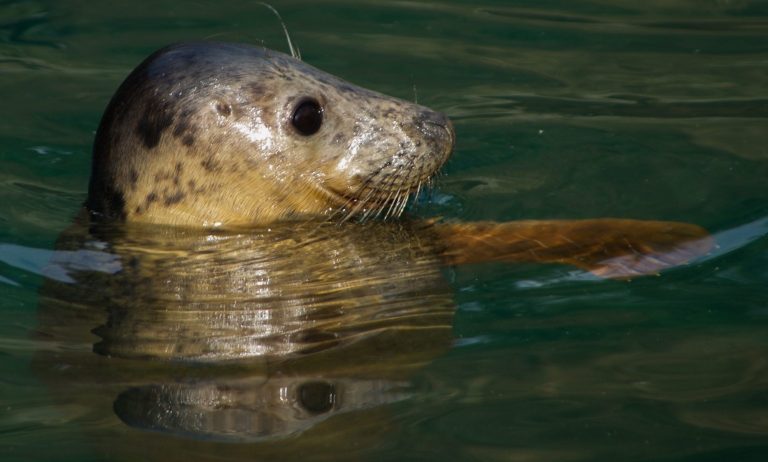
Seals as eco-indicators.
Seals are top end predators, as such they are good ecosystem indicators.
Healthy Seals = Healthy Seas!
They are subjected to persecution from some commercial sectors such as fishing and salmon farms.
Seals need to haul-out as part of their lifecycle, where they can come into conflict with humans, as we encroach on limited suitable haul-out locations.
Habitats; such as kelp forests and seagrass are being damaged, these include fish nursery grounds, this damage can adversely affects entire ecosystems.
Climate change and biodiversity loss are inextricably linked.
Seals in Scotland
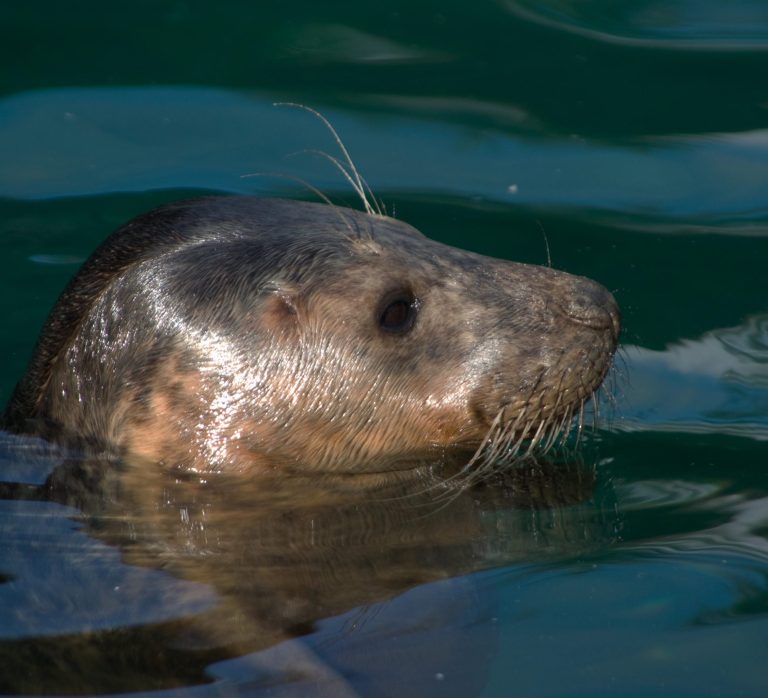
Atlantic Grey Seals
Grey seals can be found along the eastern and western coastal fringes of the Atlantic Ocean.
Grey seals Halicoerus grypus.are Scotland's larger seals can often be seen in and around harbours.
I.D.
Grey seals have a ‘Roman’ nose and their nostrils are close to parallel; not joining near the mouth, they are larger than common seals, especially the males, which can be more than two metres, less for females approximately 180cm. Males can be around 230Kgs, females 150Kg.
Seals need to 'haul-out' as part of their life cycle, this is very important during pupping season; between September to December. Disturbed pups can die of hypothermia and injury from walkers and boats getting too close.

Seal Numbers
The UK has more than one third of the world’s grey seals, most of these pup in Scotland and one quarter of the European common seals are located in Scotland.
Scottish seals at the last count: Grey Seals 25,412, Common Seals 26,846
Unfortunately, comparing seal numbers over time is not straight forward, we do not even hold base-line figures, from which to start. This is further complicated by two viral (Phocine Distemper Virus' (PDV) outbreaks in common seals and different levels of recovery throughout Europe. Scotland’s east and west coasts are strikingly different.
In the early 1900’s reported figures were as low as 500 grey seals. This would be classed as near extinction levels for Scottish waters. There have been three pieces of legislation in the UK plus one extra in Scotland which include; “protection” for seals.
Over time there have been fewer counts and the methodology has changed, therefore comparisons are difficult to make. The last reported Scotland wide count was between 2016 and 2019, therefore any recent changes in population will not be recorded.
Data for Special Areas of Conservation (SACs) for seals now tend to show a much larger area, called “buffer zones”, than just the SAC, this can be confusing, even misleading. NatureScot (then SNH) started boat counts at the Lismore SAC, designated for common seals, they returned counts higher than the accredited Sea Mammal Research Unit (SMRU), this led to our own counts which were very close to the SMRU.
The 2016-2019 report states that the Lismore SAC is "stable".
We would add the caveat; -
At an all time low!
Several European Commission complaints were submitted concerning the seal situation in Scotland and we later found out that the NatureScot figures included seals outside of the SAC, something that they failed to declare at the time.
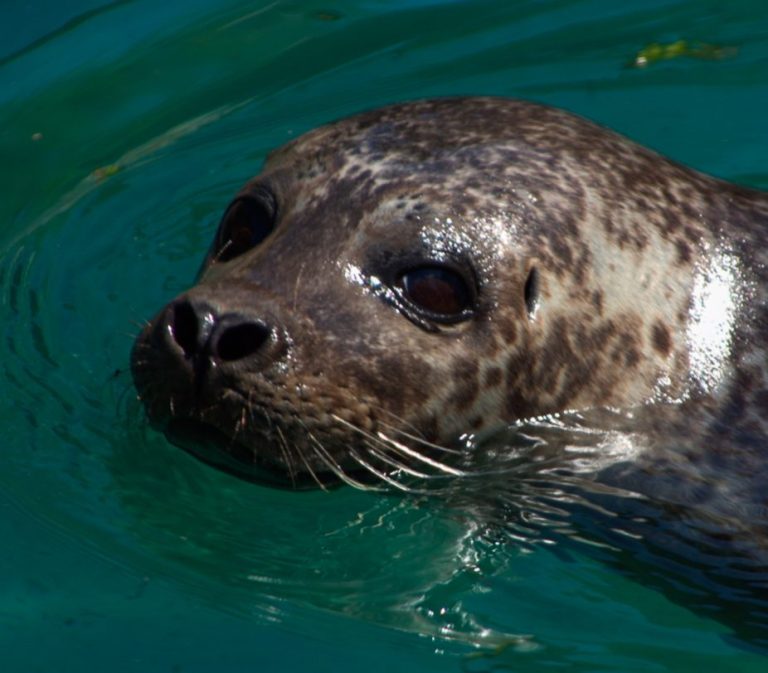
Common or
Harbour Seals
Common seals Phoca vitulina be found throughout the northern hemisphere, there are five subspecies; the European sub-species; Phoca vitulina vitulina is limited to coastal Europe.
It is less common to see Common or 'Harbour' seals in harbours but they are often found on rocky reefs close by.
I.D.
Common seals look somewhat like a Labrador without ears, they have a dip on the forehead and their nostrils tend to form a ‘V’.
They can measure up to two metres and weight varies between 65 – 150Kgs.
Common seals pup between June and September, where they are vulnerable to disturbance. Kayaks and paddle boarders are a particular problem due to their quiet approach.
The true seals cannot ‘walk’ on their hind limbs and use their hind limbs for propulsion, pectoral flippers for turning and holding.

Did you know? There are more African elephants than Grey Seals!
Even fewer European Common seals!
Welcome to Seal Scotland; incorporating Marine Concern
All Pics © Mark (MC)
We need your consent to load the translations
We use a third-party service to translate the website content that may collect data about your activity. Please review the details in the privacy policy and accept the service to view the translations.
